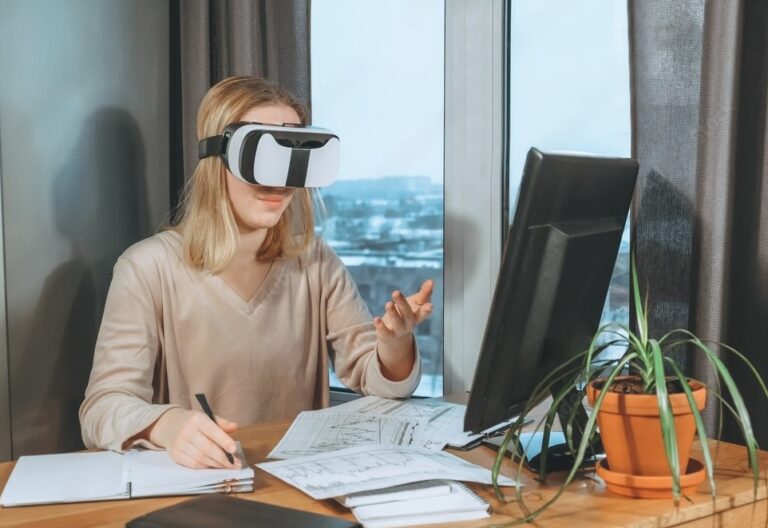The Future of Work: Remote Collaboration Tools and Techniques for Engineers

The way people work is changing rapidly, especially for engineers. More and more, they find themselves working remotely, away from traditional office settings. This shift demands effective collaboration techniques and the use of appropriate tools to ensure productivity and cohesion within remote teams. In this discussion, we’ll explore various strategies, tools, and trends essential for engineers to thrive in remote work environments.
Techniques for Effective Collaboration in Remote Teams
Communication is the cornerstone of successful remote collaboration. Engineers must utilize various communication channels such as messaging apps (e.g., Slack, Microsoft Teams) and video conferencing tools (e.g., Zoom, Google Meet) to facilitate seamless interaction and idea exchange. Regular team meetings and stand-ups help maintain alignment and foster a sense of unity despite physical distances.
Additionally, employing shared documents and version control systems (e.g., Google Drive, Microsoft OneDrive, GitHub) allows engineers to collaborate on projects simultaneously, ensuring everyone is working with the most up-to-date information. Clear task assignment and progress tracking systems help keep team members accountable and aware of project developments.
Tools and Resources for a Stress-Free and Productive Remote Environment
Creating an ergonomic and conducive workspace is vital for remote engineers. This involves setting up a comfortable workstation with ergonomic furniture and adequate lighting. Establishing boundaries between work and personal life, such as defining working hours and taking regular breaks, promotes well-being and prevents burnout.
Moreover, using productivity tools like project management software (e.g., Trello, Asana) and time-tracking apps (e.g., Harvest, Toggl) helps remote engineers stay organized and focused. Incorporating mindfulness practices, such as meditation or breathing exercises, can enhance concentration and reduce stress levels.
Challenges of Remote Collaboration
Geographical Dispersion:
One of the primary challenges of remote collaboration is the physical separation of team members. Geographical dispersion can lead to communication barriers, delays in information sharing, and a sense of disconnection among team members.
Communication Breakdowns:
Effective communication lies at the heart of successful collaboration. However, remote settings often exacerbate communication challenges due to reliance on digital platforms, leading to misunderstandings, misinterpretations, and decreased clarity in conveying complex ideas.
Coordination and Synchronization:
Coordinating tasks and ensuring alignment among team members can be challenging in remote settings. Without physical proximity, synchronizing efforts, resolving conflicts, and maintaining project momentum require deliberate effort and efficient project management practices.
Building Trust and Camaraderie:
Remote collaboration can impede the natural development of trust and camaraderie that often occurs through face-to-face interactions. Establishing trust in virtual teams necessitates intentional relationship-building activities and fostering a sense of belonging despite physical separation.
Technological Barriers:
Reliance on technology for communication and collaboration introduces technical challenges such as connectivity issues, software compatibility, and cybersecurity concerns. Overcoming these barriers requires robust IT infrastructure, user training, and proactive cybersecurity measures.
Opportunities in Remote Collaboration
Flexibility and Work-Life Balance:
Remote collaboration offers the opportunity for greater flexibility in work arrangements, enabling team members to balance professional commitments with personal responsibilities. Flexible work schedules can enhance employee satisfaction, morale, and overall well-being.
Access to Global Talent:
Geographical barriers are no longer constraints in remote collaboration, allowing organizations to access talent pools from around the globe. Leveraging diverse perspectives and expertise fosters innovation, creativity, and problem-solving capabilities within remote teams.
Increased Productivity and Efficiency:
Remote collaboration can enhance productivity by minimizing time spent on commuting and providing uninterrupted work environments conducive to deep focus and concentration. Leveraging productivity tools and asynchronous communication can streamline workflows and accelerate project timelines.
Environmental Sustainability:
Reduced reliance on commuting and physical office spaces in remote collaboration contributes to environmental sustainability by lowering carbon emissions and resource consumption. Embracing remote work practices aligns with corporate social responsibility initiatives and promotes eco-friendly work cultures.
Adaptability and Resilience:
Remote collaboration cultivates adaptability and resilience in teams, enabling them to navigate dynamic work environments and unforeseen challenges. Embracing remote work fosters a culture of agility, innovation, and continuous improvement within organizations.
Remote Collaboration Tools and Trends
- Virtual Reality (VR) and Augmented Reality (AR) Integration:
Virtual Reality (VR) and Augmented Reality (AR) technologies are poised to revolutionize remote collaboration by creating immersive digital environments where team members can interact and collaborate as if they were physically present. VR headsets and AR devices enable users to visualize complex data, manipulate 3D models, and engage in realistic simulations, transcending the limitations of traditional video conferencing tools.
In remote engineering projects, VR and AR integration can facilitate collaborative design reviews, virtual prototyping, and interactive training sessions. Engineers can explore virtual prototypes in real-time, provide feedback, and make iterative improvements collaboratively, enhancing efficiency and reducing time-to-market. Moreover, AR overlays can provide contextual information and guidance during remote troubleshooting and maintenance tasks, improving accuracy and reducing downtime.
As VR and AR technologies continue to advance, they hold the potential to transform remote collaboration across diverse industries, enabling more immersive and engaging interactions that transcend geographical boundaries.
2. Artificial Intelligence (AI) for Task Automation and Insights:
Artificial Intelligence (AI) is poised to play a pivotal role in remote collaboration by automating repetitive tasks, enhancing productivity, and providing valuable insights to remote teams. AI-powered virtual assistants and chatbots can streamline administrative processes, schedule meetings, and facilitate information retrieval, freeing up valuable time for engineers to focus on high-value tasks.
In engineering projects, AI algorithms can analyze vast amounts of data to identify patterns, optimize workflows, and predict potential issues proactively. For example, AI-powered predictive maintenance systems can monitor equipment remotely, detect anomalies, and schedule maintenance activities preemptively, minimizing downtime and enhancing operational efficiency.
Furthermore, AI-driven analytics tools can provide valuable insights into project performance, resource allocation, and risk assessment, empowering remote teams to make data-driven decisions and adapt to changing circumstances effectively.
As AI technologies continue to evolve, they offer unprecedented opportunities for remote collaboration, enabling teams to work smarter, faster, and more effectively in a distributed work environment.
3. Enhanced Cybersecurity Measures for Remote Workforces:
As remote work becomes more prevalent, ensuring cybersecurity is paramount to protect sensitive data and mitigate potential threats. Enhanced cybersecurity measures are essential to safeguard remote workforces against cyber-attacks, data breaches, and unauthorized access.
Implementing robust authentication mechanisms, encryption protocols, and multi-factor authentication (MFA) solutions can fortify remote access to corporate networks and cloud-based resources, reducing the risk of unauthorized access and data leakage. Additionally, endpoint security solutions such as antivirus software, firewalls, and intrusion detection systems (IDS) can help detect and prevent malicious activities on remote devices.
Furthermore, ongoing cybersecurity awareness training and education programs are essential to empower remote employees with the knowledge and skills to recognize and respond to cybersecurity threats effectively. By promoting a culture of cybersecurity vigilance, organizations can enhance the resilience of their remote workforces and mitigate the potential impact of cyber threats.
Exploring future trends in remote collaboration encompasses leveraging innovative technologies such as Virtual Reality (VR) and Augmented Reality (AR) integration, harnessing the power of Artificial Intelligence (AI) for task automation and insights, and implementing enhanced cybersecurity measures to protect remote workforces. By embracing these trends, organizations can unlock new opportunities for collaboration, innovation, and success in an increasingly remote and interconnected world.
Conclusion
In conclusion, the future of work for engineers hinges on effective remote collaboration facilitated by advanced tools and techniques. By prioritizing clear communication, utilizing appropriate tools, and embracing emerging trends, remote engineering teams can overcome geographical barriers and achieve remarkable productivity and innovation. As technology continues to evolve, the possibilities for remote collaboration are endless, promising an exciting future for engineers worldwide.
